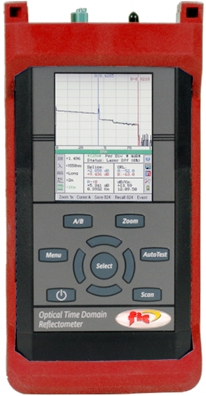
|
|
The FIS OVP-850 850 nm Multimode BOBCAT OTDR w/VFL features Trace Overlay, Visual Fault Locator, Color Display, One Button Autotest and Event Analysis. The OVP-850 OTDR’s abundant dynamic range and a 2 meter dead zone, makes it ideal for links up to 240km as well as being perfect for short LAN links within the facility. Weighing in at less than two pounds, this OTDR is ideal for all conditions. The rubber boot with bail adds protection and provides the ideal angle for viewing the display while operating on a work bench. Trace analysis and reporting is fast and easy with the Pass/Fail feature, onboard event table or the supplied Telcordia SR4731 compatible software with multi-trace capability. The OTDR has on board storage of 1000 traces with the ability to download traces directly to your computer via USB cable. Specifications. Wavelength: 850 ±20nm. Dynamic Range: 27dB MM. Pulse Width: 20 - 10,000 ns. Units of Measurement: km, kf. Event Dead zone: 2m. Attenuation Dead Zone: 5m. Resolution: 0.25 to 64m. Distance Uncertainty: ±(0.75m + 0.005% x distance + sampling resolution). Full Scale Distance Range: 1-64km MM. Typical Real-time Refresh Rate: 4 Hz. Group Index of Refraction (GIR): 1.024 - 2.048. Linearity: ± .05 dB/dB. Memory Capacity: 1000. Memory Type: Internal. Visible Light Source; Emitter Type: Laser. Wavelength: 650nm ±5nm. Output Power: 1mW Max.
|